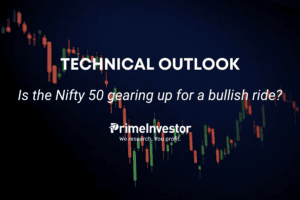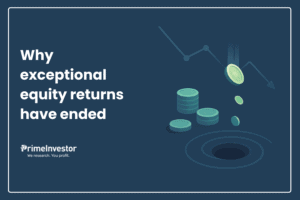A few weeks ago, we had written in detail the categories in which we think passive funds have become a necessity to keep your portfolio returns stable; even if you hold active funds. We made this call as performance of active funds were becoming relatively more inconsistent, in a few key categories.
One of these was the large-and-midcap category. Here, the representative index is the Nifty Large Midcap 250 which most funds use as the main benchmark. But up until recently, there was no passive fund or ETF for you to invest in the index. For a broad-market exposure, what you had was the Nifty 500 index funds (or ETFs). That changed last December, when Edelweiss AMC launched an index fund tracking the Nifty Large Midcap 250. We added the fund to Prime Funds in our September 2022 quarter review.
Here’s explaining the index, how you can use it in your portfolio, and the passive fund’s ability to keep tracking error contained.

About the Nifty LargeMidcap 250
The Nifty Large Midcap 250 was launched in 2017, primarily owing to SEBI’s introduction of the large-and-midcap category. However, the index has a base date of 2005, meaning that the index levels have been calculated from then.
Index construction
The index is a market-cap weighted index that represents the large-cap basket contained in the Nifty 100 and the mid-cap universe of the Nifty Midcap 150. However, the index is not built by simply taking into account the free-float market cap of the entire list stocks, as the Nifty 100 and Nifty Midcap 150 do.
Instead, the index first caps the total weight of the large-cap stocks and the mid-cap stocks at 50% each. Each stock’s weight within each segment is then decided based on its free-float market cap. The index weights are reset every quarter.
As a result, the midcap segment’s performance, wields significant influence on the index’s performance. This could also be a factor that drags active funds into underperformance against the index as funds tend to be more conservative on the midcap exposure even though they have the freedom to up allocations beyond the minimum mandated 35%.
This apart, owing to the split-and-cap of the large and midcap segments, individual stock weights also tend to be lower compared to the Nifty 500 which weights all its constituents on their market cap alone. The top 10 stocks by weight in the Nifty LargeMid 250 is a low 24%. For the Nifty 500, the weight is higher at 38%. Similarly, sector concentration is also higher in the Nifty 500.
Performance
In terms of performance, the LargeMid 250 occupies a space between the Midcap 150 and the Nifty 500. To put it in a quick summary, the LargeMid Cap 250 delivers better than the Nifty 500 but is more volatile, and returns marginally lower than the Midcap 150 and for lower volatility.
Against the Nifty 500: Since the 2005 base date, the LargeMidcap index 250 has delivered superior returns over the Nifty 500 about 80% of the time on a rolling 3-year and nearly all the time on a rolling 5-year return basis. However, the return differential between the two indices is not high at 1.5 percentage points on an average.
It is only during phases of peak mid-cap performance – such as 2013-16 or 2014-2019 - that the LargeMid 250 pushes well ahead. Since the Nifty 500 is fully market cap weighted, it has a high allocation to the large-cap basket. Currently, for example, large-caps account for over 75% of the index. Therefore, though the index houses midcaps (as well as smallcaps, which the Large Midcap 250 does not), the high-returning segment doesn’t drive returns as much as in the Nifty LargeMid 250.
Otherwise, the LargeMid 250 is just a couple of notches above the Nifty 500. Importantly, the LargeMid 250 is higher on volatility (see table below) and tends to slip into losses more frequently especially in shorter-term periods.
Against the Midcap 150 index: Obviously, given the pure mid-cap nature of the Midcap 150, it overall outshines the LargeMid 250 during rallies. The flip side, of course, is that a corrective phase pulls down the index far more; the LargeMid 250 receives some buttress from the large-cap exposure and is therefore better able to manage downsides. Over time, therefore, the rallies and corrections tend to compensate with the result that the average returns are more or less on the same footing. The LargeMid 250 delivers better than the Midcap 150 about half the time on a rolling 5-year basis since 2005.
Using the index in your portfolio
The Nifty LargeMidcap 250 is not an essential inclusion in your portfolio. The following pointers will tell you if and how to make it part of your portfolio:
- The Nifty LargeMidcap 250 is a high-returning index but comes with higher volatility. Therefore, use it as part of the aggressive allocation in your portfolio and do not give it a high exposure simply because it’s an index fund. It can be paired along with mid-cap and small-cap active funds for a better and more diversified exposure to the smaller market-cap segments.
- You can hold this index fund even if you already hold active funds from the large-and-midcap category. As we have observed earlier, funds in that category are not able to keep pace with the index consistently.
- Avoid holding the LargeMid 250 and the Nifty 500, or the LargeMid 250 and the Nifty Midcap 150 in the same portfolio. The similarity in performance would defeat the purpose of having more than 1 fund.
- The index is a good fit for investors who do not want the risk of a pure midcap exposure. For example, conservative investors can use this index in the place of a midcap fund. More risk-taking investors can use this index to drive returns without upping overall portfolio risk by allocating very heavily to the midcap or smallcap categories.
- The index will also suit investors with smaller-sized portfolios who may otherwise find it hard to hold different funds across market caps and strategies.
Passive fund for the index
In Prime Funds, we recommend the Edelweiss Nifty Large Midcap 250 index fund. The fund has a very short history having been launched in December last year. But it’s also the only fund that tracks the index!
The short history gives us limited room to judge tracking error. From what we see, after an initial month of spike, the return deviations between the fund and index has somewhat settled. Based on rolling 1-month returns, return deviations are similar to that of Motilal Oswal Nifty Midcap 150. In general, index passive funds tracking mid-caps and small-caps have higher tracking error owing to the liquidity issues in these market segments. Therefore, some higher tracking error is to be expected even in the Edelweiss Nifty LargeMidcap 250 index fund.
As far as expense goes, the average TER of 0.38 (for the direct plan) is in the range of those tracking indexes such as at Nifty 500, the Nifty Next 50 or the Nifty Midcap 150 – all these passive funds carry higher expense ratios than those tracking the main Nifty 50 or Sensex indices. Given that there is no alternative to the Large Midcap 250 at this time, expense ratio may remain on the higher side for the Edelweiss fund. Use the direct plan route as far as possible as the regular plan TER is far higher at 1.03%.







18 thoughts on “Use this passive fund for your large-and-midcap exposure”
I have good exposure in Mirae emerging blue chip. Should I consider this index fund from Edelweiss too?
You can provided your large & midcap exposure plus mid and smallcap exposure together does not go over 30% overall. Vidya
Hi, in the large & mid cap space, what are your views on low volatility passive funds like UTI S&P BSE Low Volatility Index Fund? It is similar but does not need to track a large index of 250 stocks.
There are Low Vol funds from the Nifty 100. You can check our ETF call on the index as well. They limit downside but have had ups and downs in performance. Not suitable if you are expecting aggressive returns. Vidya
I had a question about your mutual fund review tool. You have given star rating as well as recommendation (buy/sell/hold). Now, there are funds with 5* for which you have given a ‘hold’ rating (Axis Blue chip) and there are funds with 3* for which you have given a ‘buy’ rating (eg ICICI Pru Nifty Next 50 Index Fund). Could you please clarify how investors should interpret this? It is getting a little confusing.
Ratings are not equal to recommendations on buy, hold or sell. It’s why we have a separate review tool. Ratings are purely quantitative and no matter how exhaustive we make the metrics, there are trends and qualitative aspects ratings will not capture. This article explains in detail. So there will be top-rated funds marked as buy or hold and vice versa. In the review tool, please check the Reasoning column for a brief explanation behind the call. – thanks, Bhavana
Isn’t then a pure Midcap ETF or Index fund a better alternative? As per NSE Indices Monthly Report Dashboard for TRI CAGR Nifty Midcap has outperformed Nifty LargeMidCap Index for 1,3 and 5 years and even Nifty 50 has outperformed Nifty LargeMidCap Index over 5 year period of TRI CAGR basis
A pure midcap would certainly outperform, especially during phases where midcaps rally as we have seen recently. The large-mid has better downside containment and is less volatile so it would work for those who do not want the risk of pure midcap exposure. It’s explained in the article. – thanks, Bhavana
Isn’t then a pure Midcap ETF or Index fund a better alternative?
Yeah but the service of the AMC and it’s systems, portal etc are very poor..
Thanks for the Article 🙂
Any Cap on allocation (%) for this fund on the portfolio (am slowly moving away from active to passive funds) hence the question
Depends on what midcap/smallcap allocation you have and your risk, but in general don’t go more than 15% or so. Don’t also make it the only aggressive exposure in your portfolio if your portfolio is large enough to have more funds. – thanks, Bhavana
How is this different from Nifty Next 50 in terms of returns and risk?
Thank you,
This index will be significantly higher in terms of volatility and returns than the Next 50, given the heavy midcap exposure. – thanks, Bhavana
Thanks for the insights. Was not aware of this category straddling mid caps and large caps.
Thanks Bhavana for the insights. Only one aspect though. Are you comfortable with the AMC?
There’s very little that can go wrong with passive funds in terms of stock selection etc, so there’s limited risk involved in that sense. It’s also the only fund that tracks the index. – thanks, Bhavana
Agree with you- their customer service especially their call centre is very poor and persons lack knowledge and their systems and portal are very rigid and full of discrepancies and do not even provide most of the basic features that other AMCs and RTAs provide coupled with lack of transparency and one gets impression the AMC is more inclined towards Distributors with direct investors getting a raw deal..
Comments are closed.